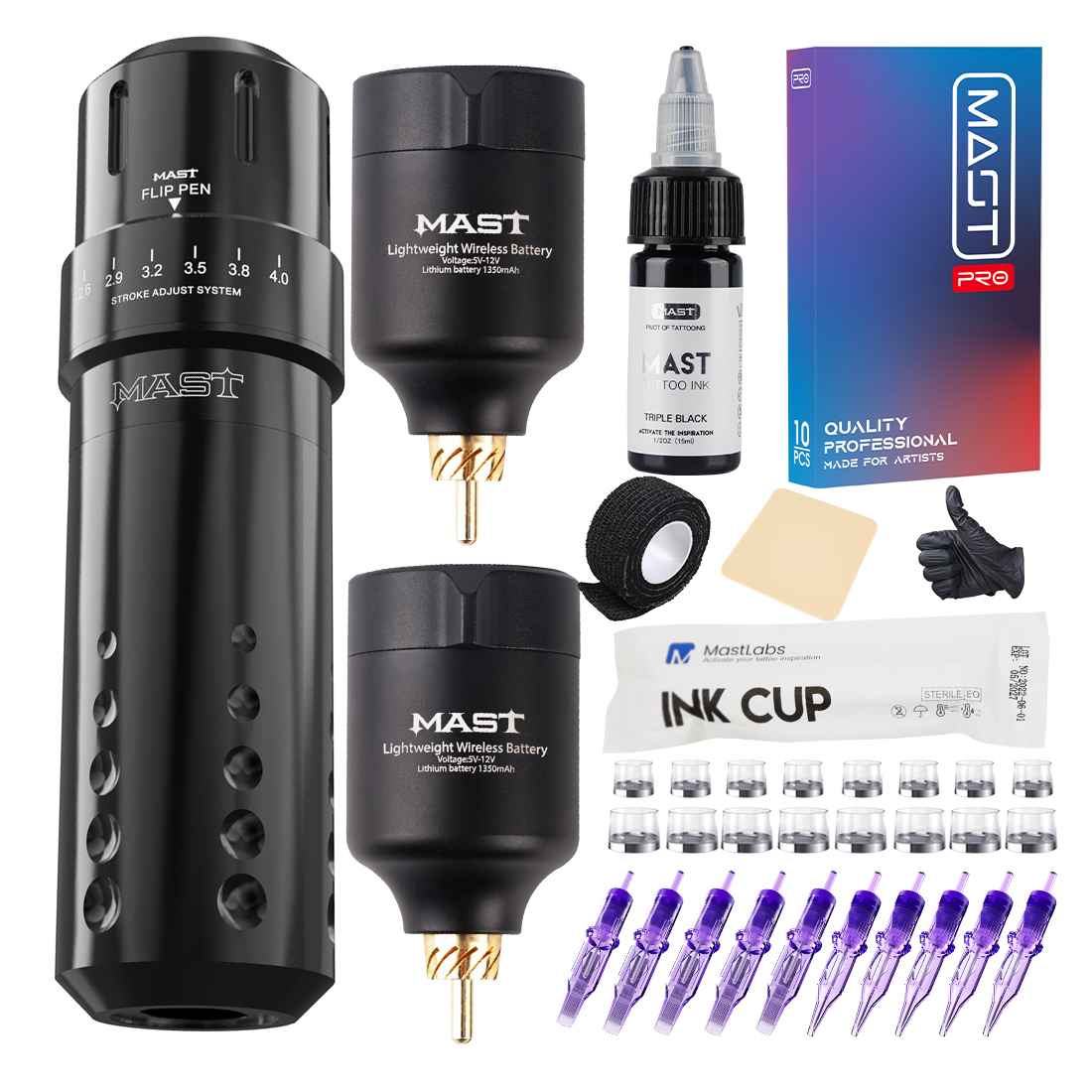Tattoos have emerged as one of the most prominent forms of self-expression and artistic body modification in contemporary society.
From intricate designs to meaningful symbols, tattoos have captivated individuals worldwide, serving as permanent reminders of personal stories, beliefs, and identities.
However, as the years go by, an intriguing question arises: Do tattoos move with age?
In this post, we delve into the captivating world of tattoos and examine how they may evolve over time.
As we age, our bodies undergo various transformations, including changes in skin elasticity, muscle tone, and overall physical composition.
These natural processes raise intriguing inquiries about the permanence and stability of tattoos.
Do they truly remain static, or do they adapt and shift as we journey through the different stages of life?
By addressing the question of whether tattoos move with age, we aim to shed light on the long-term effects of this increasingly prevalent form of body art.
Understanding the nature of tattoos
People from all walks of life embrace tattoos as a means to convey personal stories, beliefs, and identities.
As a result of this, it is essential to understand the nature of tattoos and how they interact with the ever-changing canvas of our skin.
Explanation of the tattooing process
The tattooing process involves the skilled artistry of a tattoo artist, who uses a handheld machine equipped with sterile needles to inject ink into the deep layers of the skin.
The needles puncture the skin at a rapid pace, depositing the ink beneath the outermost layer called the epidermis.
This intentional placement ensures that the tattoo design remains visible for years to come.
Discussion of how tattoos are embedded in the skin
To comprehend the longevity of tattoos, we must explore their integration within the layers of our skin.
The ink injected during the tattooing process is deposited into the dermis, the second layer of the skin.
Unlike the epidermis, which sheds and renews itself constantly, the dermis provides a stable foundation for the tattoo pigment.
The dermis comprises collagen fibers that encapsulate the ink particles, anchoring them in place and contributing to the permanence of the tattoo.
Clarification that tattoos are permanent, but the skin changes over time
While tattoos are indeed intended to be permanent, it is crucial to acknowledge that the skin itself undergoes natural changes as we age.
Over time, factors such as exposure to sunlight, fluctuations in weight, and the natural aging process can cause the skin to lose its elasticity and firmness.
These changes may indirectly affect the appearance of tattoos, leading some to wonder if tattoos move with age.
While the tattoos themselves do not physically move, the surrounding skin can stretch, sag, or develop fine lines, potentially altering the overall appearance of the tattoo.
Also Read: Why do old tattoos spread?
The aging process and its impact on tattoos
As the years pass by, our bodies undergo a natural process known as aging. This inevitable journey brings about various changes in our physical appearance, including alterations in skin elasticity, firmness, and overall texture.
Aging effects on skin elasticity and firmness
One of the key aspects affected by the aging process is skin elasticity and firmness.
As we grow older, our skin gradually loses its youthful resilience and elasticity, resulting in a looser, more relaxed texture.
This natural decline in collagen and elastin production can have implications for tattoos, as the skin surrounding the inked design may experience subtle changes over time.
Discussion of how wrinkles and sagging can affect tattoo appearance
Wrinkles and sagging skin are common signs of aging that can have a noticeable impact on the appearance of tattoos.
The development of fine lines and deep creases can intersect with tattooed areas, altering the overall visual effect.
As the skin loses its tautness, the once-smooth canvas may become a landscape of undulations and folds.
Consequently, this can lead to the distortion or blurring of intricate tattoo details, raising questions about the long-term stability and clarity of the artwork.
Also Read: Do tattoos change with age?
Factors influencing tattoo aging and movement
With tattooing aging, various factors come into play, influencing the long-term stability and appearance of tattoos.
From the location of the tattoo on the body to the quality of the initial application, care and maintenance over the years, as well as lifestyle choices and environmental factors, each element contributes to the overall integrity of the tattoo as we age.
Let’s talk about these influential factors and shed light on their impact on the permanence and movement of tattoos over time.
Location of the tattoo on the body
The placement of a tattoo on the body can significantly affect its aging process.
Areas subject to more frequent movement, such as joints or areas prone to stretching, such as the abdomen during pregnancy, may experience greater tattoo distortion or migration.
Additionally, exposure to sunlight can fade tattoos and cause them to blur over time.
By examining the influence of tattoo location on movement and aging, we can better understand how specific body regions interact with tattoos throughout the years.
Quality of the tattoo and its initial application
The quality of a tattoo and the expertise of the tattoo artist during the initial application play a crucial role in its long-term appearance.
A well-executed tattoo using high-quality pigments and proper technique is more likely to age gracefully and retain its original form.
Conversely, poorly done tattoos with subpar ink or inadequate application may experience more noticeable fading, blurring, or distortion over time.
By considering the impact of the tattoo’s quality and application, we can discern how craftsmanship contributes to the movement and aging of tattoos.
Care and maintenance of the tattoo over the years
Proper care and maintenance are essential to preserving the integrity of a tattoo as it ages.
Adequate sun protection, moisturization, and avoiding activities that may cause excessive stretching or trauma to the tattooed area can minimize the likelihood of movement or distortion.
Regular touch-ups and consultations with professional tattoo artists can also help maintain the tattoo’s original vibrancy and sharpness.
By emphasizing the significance of diligent care and maintenance, we can explore how responsible tattoo upkeep influences their movement and aging over time.
Lifestyle choices and environmental factors
Lifestyle choices and environmental factors can have a profound impact on the aging and movement of tattoos.
Factors such as weight fluctuations, changes in muscle tone, and skin texture due to aging or pregnancy can affect the appearance and positioning of tattoos.
Additionally, exposure to environmental elements like sun, chlorine, or harsh chemicals can accelerate tattoo fading or distortion.
By examining the influence of lifestyle choices and environmental factors, we can better understand how these external variables interact with tattoos and contribute to their movement over the course of aging.
Also Read: Is it possible for a tattoo to move?
Tips for preserving tattoo quality with age
Here are some tips for maintaining tattoo quality with age, to help you preserve the vibrancy and integrity of your tattoos.
By implementing these suggestions, you can ensure that your cherished body art remains a source of pride and admiration for years to come.
Suggestions for Maintaining Healthy Skin to Prevent Tattoo Distortion
To prevent tattoos from distorting or becoming less defined as we age, it is essential to prioritize the health and care of our skin.
Here are a few key recommendations:
Hydration: Adequate hydration is crucial for maintaining skin elasticity and preventing dryness. Drink plenty of water and use moisturizers regularly to keep your skin supple and plump.
Balanced Diet: Nourish your skin from within by consuming a balanced diet rich in vitamins, minerals, and antioxidants.
Opt for foods that promote collagen production and support skin health, such as fruits, vegetables, and lean proteins.
Avoid Smoking: Smoking accelerates the aging process and can have detrimental effects on the appearance of your tattoos.
Quitting smoking or avoiding exposure to secondhand smoke can help maintain the vibrancy and clarity of your ink.
Advice on Protecting Tattoos from Excessive Sun Exposure
Sun exposure is one of the primary factors that can lead to tattoo fading and distortion over time.
Consider the following tips to shield your tattoos from excessive sun damage:
Sunscreen: Apply a broad-spectrum sunscreen with a high SPF to your tattoos whenever they are exposed to sunlight.
Regularly reapply sunscreen, especially if you are spending an extended period outdoors or engaging in activities that cause sweating or rubbing.
Protective Clothing: Whenever possible, cover your tattoos with clothing or accessories that provide physical protection from the sun’s harmful UV rays.
Opt for lightweight, breathable fabrics that still shield your tattoos effectively.
Timing: If you plan to spend an extended period in the sun, try to schedule outdoor activities during early morning or late afternoon when the sun’s rays are less intense.
Recommended Skincare Routines to Promote Tattoo Longevity
Implementing a consistent skincare routine can significantly contribute to maintaining the quality and appearance of your tattoos.
Consider the following skincare practices:
Gentle Cleansing: Use mild, fragrance-free cleansers to cleanse your tattoos without causing irritation or stripping away essential moisture.
Avoid using harsh soaps or scrubbing vigorously, as this can lead to color fading or distortion.
Moisturizing: Apply a tattoo-specific moisturizer or fragrance-free lotion to keep your skin hydrated and supple.
Moisturizing regularly can help prevent dryness and flakiness, which can impact the clarity and vibrancy of your tattoos.
Avoid Harsh Chemicals: Be cautious when using skincare products that contain harsh chemicals, such as alpha hydroxy acids (AHAs) or retinoids, directly on your tattoos. These ingredients can potentially cause fading or irritation.
Also Read: What happens to tattoos when you are older?
Conclusion
In conclusion, the question “Do tattoos move with age?” has led us on a journey through the complexities of tattoo aging and preservation.
We have explored suggestions for maintaining healthy skin, protecting tattoos from sun exposure, and implementing skincare routines to promote tattoo longevity.
However, it is important to remember that the aging process affects each person and tattoo differently.
Factors such as skin texture, lifestyle choices, and environmental influences all play a role in how tattoos may evolve over time.
As our tattoos gracefully age alongside us, it is crucial to embrace the changes and unique character they acquire.
Like a well-worn piece of art, our tattoos tell a story of our experiences and personal growth. Let us celebrate the resilience and individuality.






